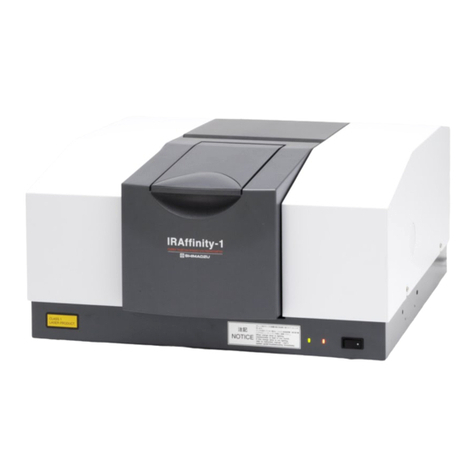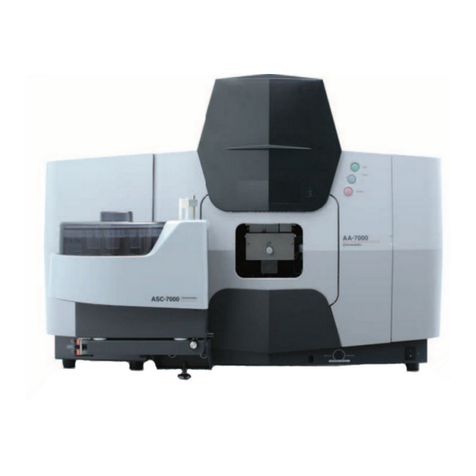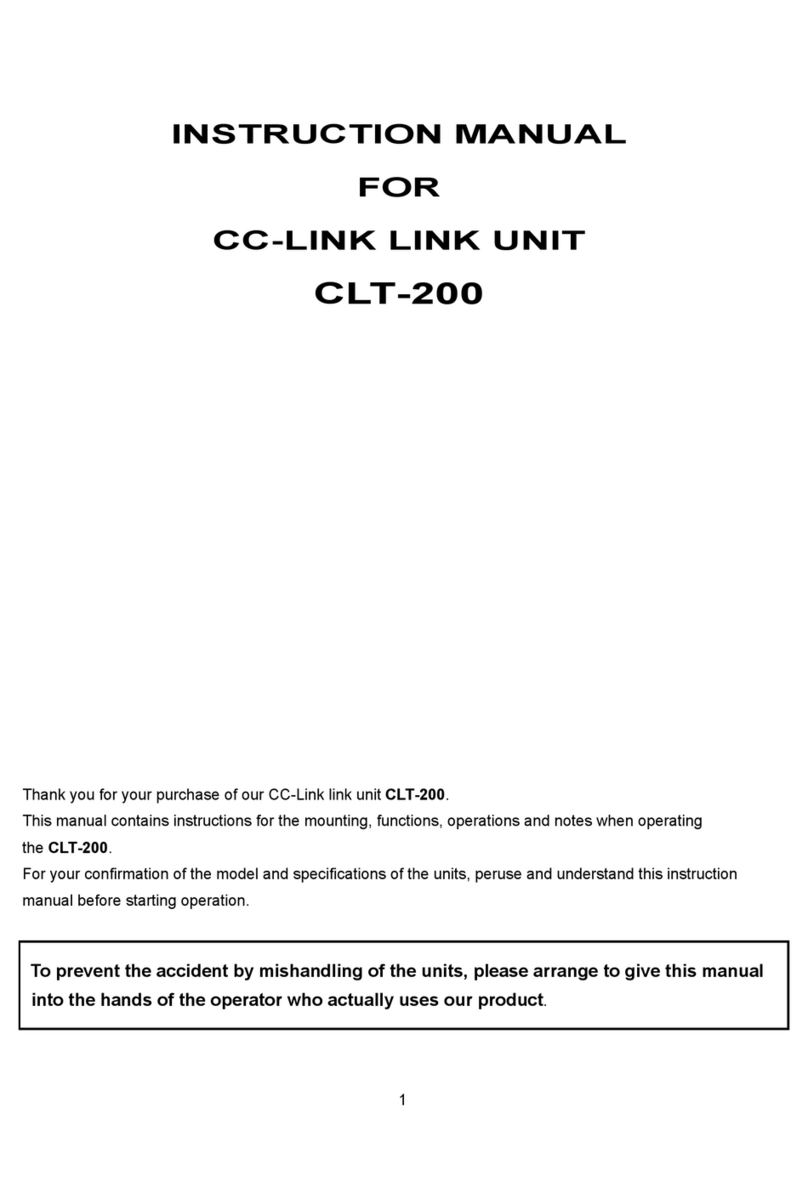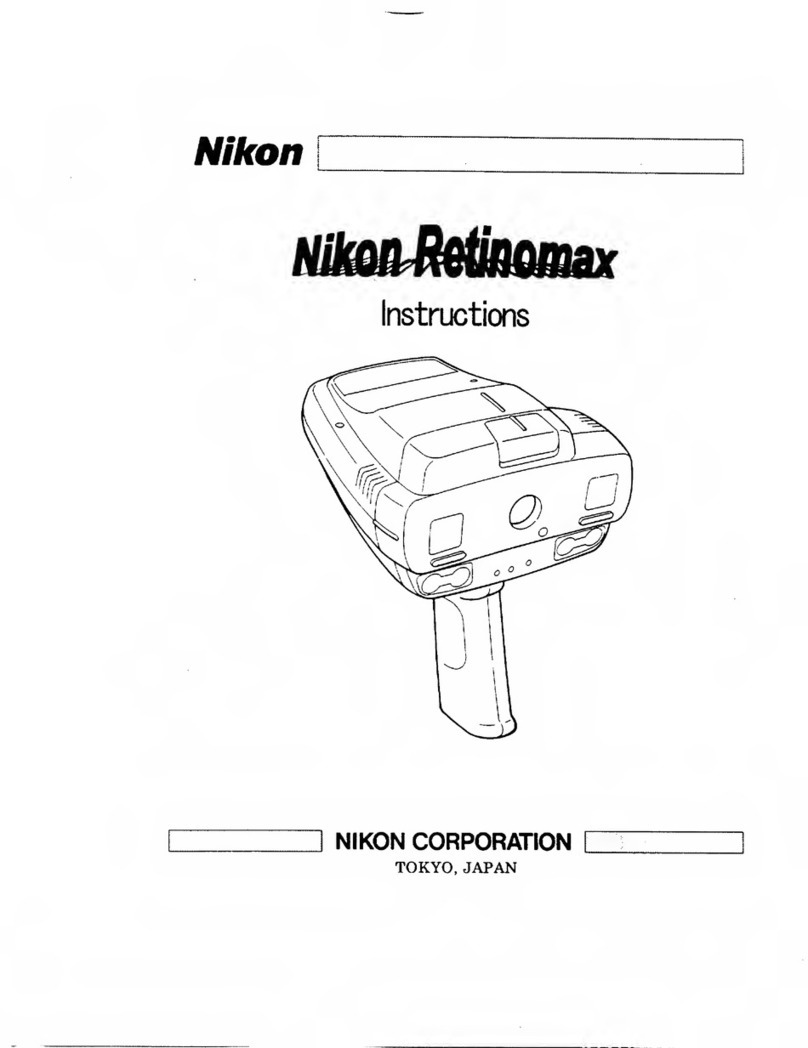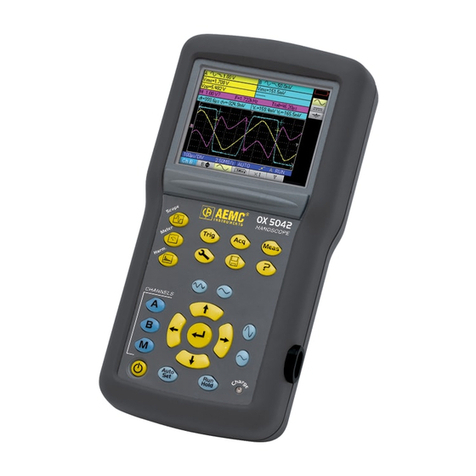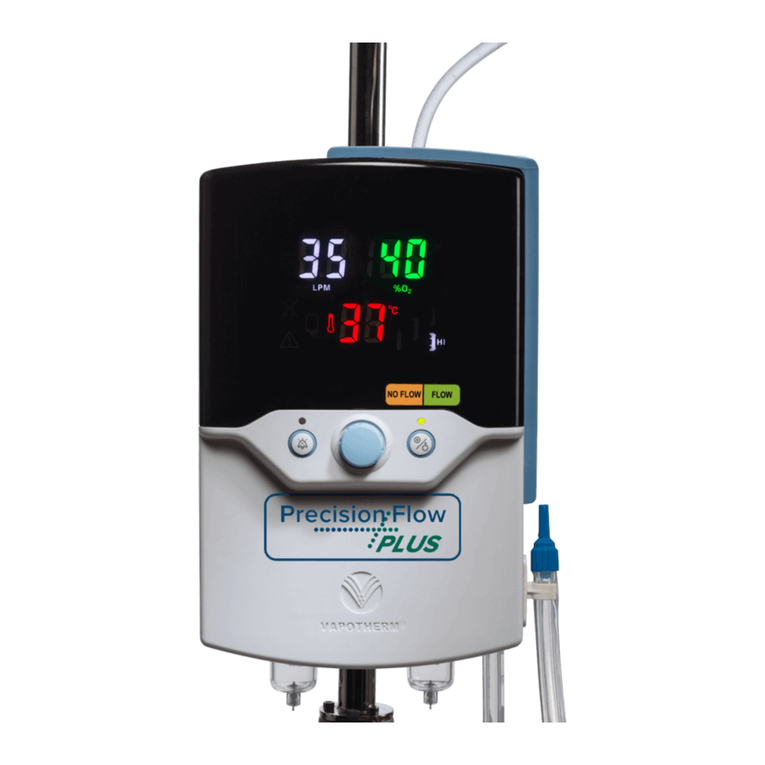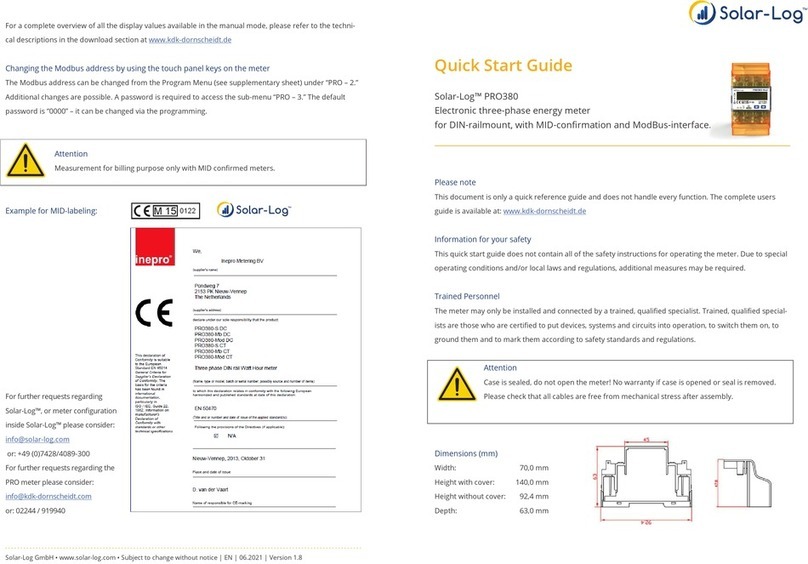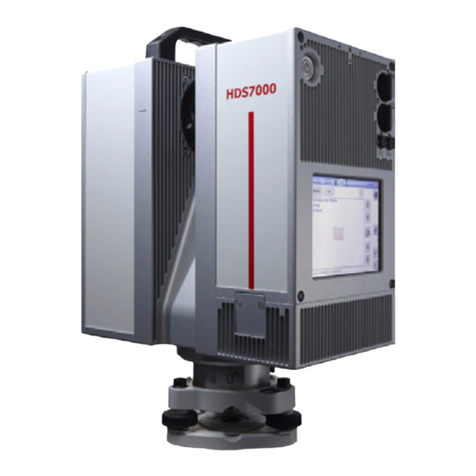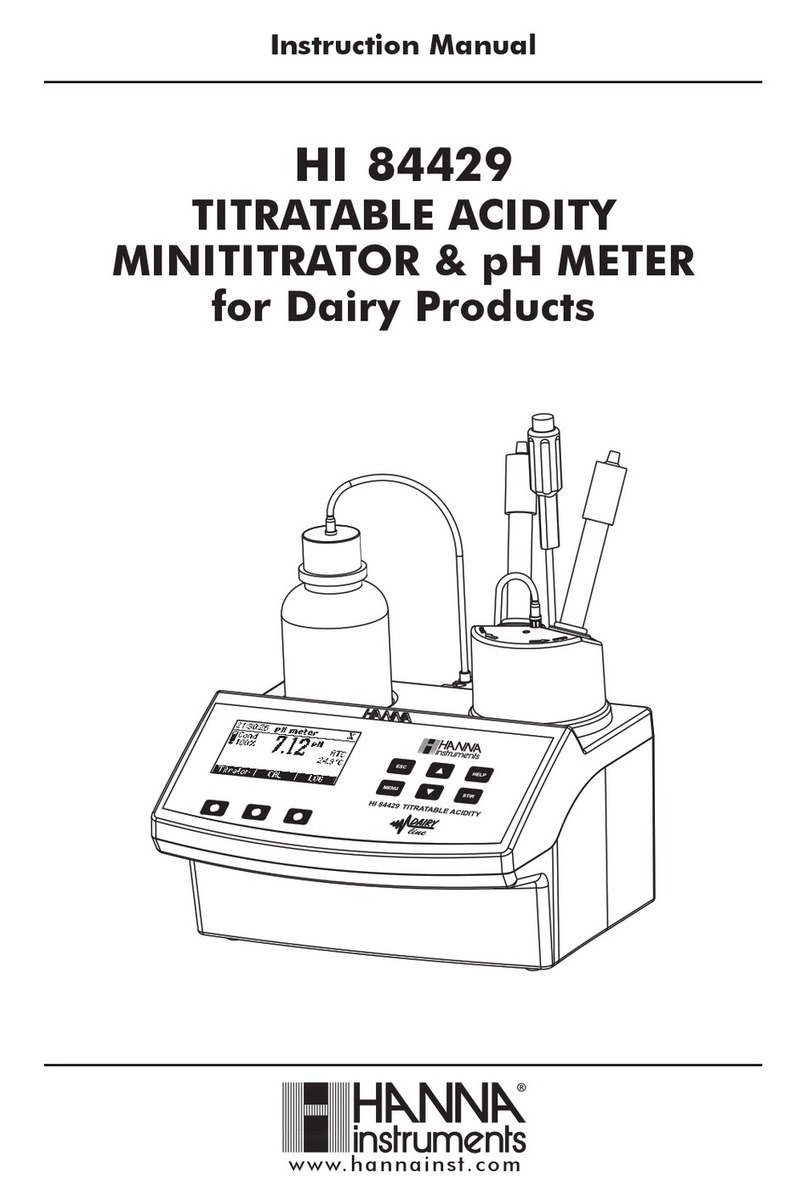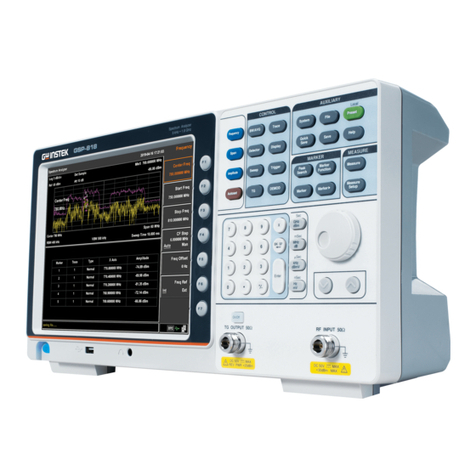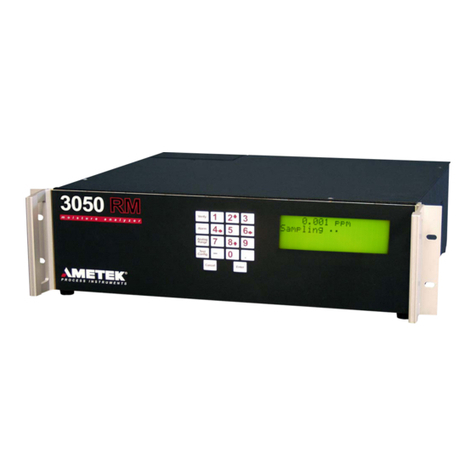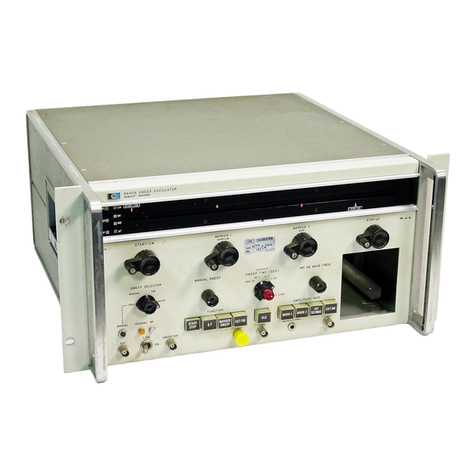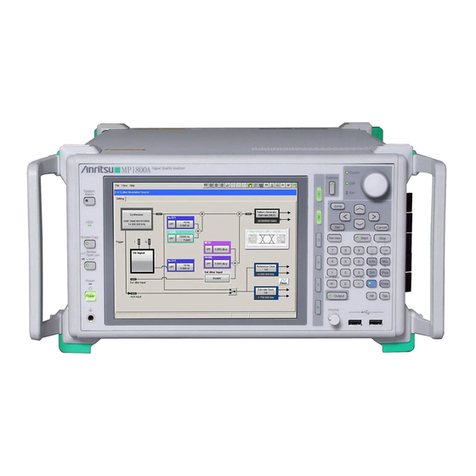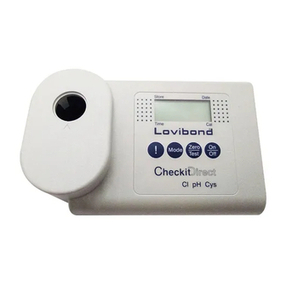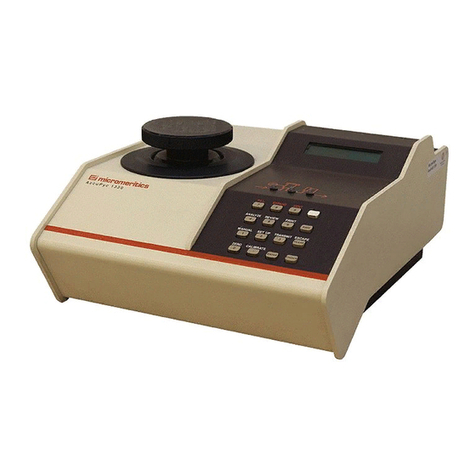Shimadzu PDA-7000 User manual

211-78001E
Jun. 2018
SHIMADZU OPTICAL EMISSION SPECTROMETER
PDA-7000
INSTRUCTION MANUAL
Read the instruction manual thoroughly before you use the product.
Keep this instruction manual for future reference.
* Refer to the following document for detailed operation of software.
Data Processing Software PDAfor Windows Operatioin Manual
P/N 211-54796
Data Processing Software PDA for Windows Installation Manual
P/N 211-78114
ANALYTICAL & MEASURING INSTRUMENTS DIVISION

(This page is intentionally left blank.)

i
Introduction
Read this Instruction Manual thoroughly before using the product.
Thank you for purchasing Shimadzu optical emission spectrometer PDA-7000.
PDA-7000 is a PDA photoelectric-photometric optical emission spectrometer which
simultaneously and quickly carries out analyses of multi-elements in metal with a high
precision. The photoelectric-photometric emission spectrometer, which is adopted in a
wide range of fields, is an essential instrument for quality control.
This manual describes the installation, operation, usage cautions, accessories and
options for this product. Read this manual thoroughly before using the product and
operate the product in accordance with the instructions in this manual.
Also, keep this manual for future reference.

ii
IMPORTANT
•If the user or usage location changes, ensure that this Instruction Manual is always
kept together with the product.
•If this manual or a product warning label is lost or damaged, immediately contact
your Shimadzu representative to request a replacement.
•To ensure safe operation, read all Safety Instructions before using the product.
•To ensure safe operation, contact your Shimadzu representative if product
installation, adjustment, or re-installation (after the product is moved) is required.
Notice
•Information in this manual is subject to change without notice and does
not represent a commitment on the part of the vendor.
•Any errors or omissions which may have occurred in this manual despite
the utmost care taken in its production will be corrected as soon as
possible, although not necessarily immediately after detection.
•All rights are reserved, including those to reproduce this manual or parts
thereof in any form without permission in writing from Shimadzu
Corporation.
•Microsoft and Windows are registered trademarks of Microsoft
Corporation in the United States and/or other countries. Other company
names and product names mentioned in this manual are trademarks or
registered trademarks of their respective companies.
The TM and ® symbols are omitted in this manual.
© 2004-2018 Shimadzu Corporation. All rights reserved.

iii
Indications Used in This Manual
Dangers, Warnings, Cautions, and Notes are indicated using the following conventions:
Note
Dangers, Warnings, Cautions, and Notes are indicated using the
following conventions:
Warning
Indicates a potentially hazardous situation which, if not
avoided, could result in serious injury or possibly
death.
Caution
Indicates a potentially hazardous situation which, if not
avoided, may result in minor to moderate injury, or
equipment damage.
Note
Emphasizes additional information that is provided to
ensure the proper use of this product.

iv
Warning Labels
Warning
Electric Shock
Before removing the excitation unit front panel, be sure to turn OFF
the power of the excitation source unit. Never remove other panels.
Front Panel of Excitation Unit

v
Safety Instructions
To ensure safe product operation, read these important safety instructions carefully before
use and follow all DANGER, WARNING and CAUTION instructions given in this section.
Installation Site
Warning
Do not operate PDA-7000 under explosive and/or corrosive
atmosphere.
Note
When installing PDA-7000 near apparatus generating a ferromagnetic
field such as an electric arc furnace, contact your Shimadzu
representative.
Installation
To ensure safe operation, contact your Shimadzu representative if product installation,
adjustment, or re-installation (after the product is moved) is required.

vi
Operation
PDA-7000 generates high voltage based on the measurement principles. If it is correctly
used, no problem will occur. If not, it may cause an accident and damage. For safety
operation and dangerous accident prevention, strictly observe the following precautions.
1. Precautions for operator safety and for handling the instrument
Warning
PDA-7000 may cause radio disturbance during discharge. Personnel
with pacemakers should be especially careful during discharge.
Caution
Electric Shock
Never start the discharge without correctly setting and holding the
sample on the spark stand.
Caution
●Thoroughly read the instruction manual to strictly observe it. If you
have any question, contact your Shimadzu representative.
●Keep this instruction manual near the instrument for quick
reference of the operation procedures and safety precautions
anytime necessary.
Note
The contents of the hard disk of the personal computer may be lost as
the result of an unforeseen accident. Always create a backup to
protect critical data from such accidents.

vii
2. Restriction of operators
Warning
The inside of the instrument should only be repaired by personnel
specially trained by Shimadzu Corporation since it is dangerous. Do
not disassemble or modify the instrument without permission as it
may compromise the safety of the instrument.
Caution
Use of the instrument is allowed only to personnel who have
understood the safety precautions well and have been well-trained for
the operating procedure.
It is a must to establish a system by which no one other than the
operator above is allowed to use it.

viii
In an emergency
Warning
●In case of leakage of argon gas
If it is left, lack of oxygen may occur. Immediately ventilate the
working area and check for gas piping.
●In case of abnormal temperature raise of the spectrometer unit
The room temperature should be kept within the range of 10 - 28°C.
If it exceeds 30°C, the temperature of the spectrometer unit may
raise abnormally.
If the temperature of the spectrometer unit exceeds 42°C, the buzzer
at the temperature alarm will give a warning sound. In that case,
turn OFF the AIRCON switch on the switch panel and make sure the
room temperature is within the range of 10 - 28°C. Then, wait until
the temperature inside the spectrometer goes down to the room
temperature, and turn ON the AIRCON switch again.
If the buzzer gives a warning sound even after that, turn OFF the
AIRCON switch and contact your Shimadzu representative.
●Safety measure for other emergency occurrences
If an unpredictable happening like an earthquake, fire, etc. occurs,
first press the emergency stop switch, and then turn OFF all the
power of the distribution panel. After this, each staff must carefully
take an appropriate action to maintain his/her safety.
During a power outage
In case of a power failure, follow the procedure described below.
1. Turn off the MAIN breaker on the switch panel.
2. Turn off theAIRCON, CONSOLE, and SOURCE switches on the switch panel.
3. Turn off the power switch of the vacuum pump.
4. When the power is back, turn on the MAIN breaker on the switch panel.
5. Turn on the AIRCON, CONSOLE, and SOURCE switches on the switch panel.
6. Turn on the power of the vacuum pump.

ix
Handling High-pressure Gas
PDA-7000 requires the use of high-pressure argon gas.
Note that the following points regarding the handling of high-pressure gases in Japan:
1) By law, permission is required to use cylinders containing more than 300m3.
2) When using gas of a pressure that exceeds 980.665kPa (10kgf / cm2) inside the
equipment at room temperature, the equipment is regarded as high-pressure gas
equipment and, by law, notification of use must be submitted.
Refer to your government laws and regulations related to high pressure gas control,
liquefied petroleum gas control, general high pressure gas control, and fire defense.
Also, follow the precautions and instructions below for the safe use of high-pressure gas.
Warning
●Install the gas cylinder in a well-ventilated outdoor location that is
not exposed to direct sunlight and convey the gas indoors via a pipe.
Regarding liquefied gases in particular, this setup is required by law
in Japan.
●Ensure that the temperature of the gas cylinder never exceeds 40°C.
Also, ensure that there are no open flames within 2m of the gas
cylinder.
●Ensure that the location where high-pressure gas is used is well
ventilated and, as part of initial inspection, check for gas leaks with
soapy water.
●Prevent the cylinder from falling or toppling over by securing it with
rope or chain. Be sure not to let liquefied-gas cylinders topple over
into a horizontal position.
●After using the gas, close the cylinder's main valve immediately.
●Inspect the functional capability of the pressure gauge at least once
every three months.

xi
Warranty
Shimadzu provides the following warranty for this product.
1. Period:
Please contact your Shimadzu representative for information about the period of this
warranty.
2. Description:
If a product/part failure occurs for reasons attributable to Shimadzu during the warranty
period, Shimadzu will repair or replace the product/part free of charge. However, in the
case of products which are usually available on the market only for a short time, such as
personal computers and their peripherals/parts, Shimadzu may not be able to provide
identical replacement products.
3. Limitation of Liability:
(1) In no event will Shimadzu be liable for any lost revenue, profit or data, or for special,
indirect, consequential, incidental or punitive damages, however caused regardless of
the theory of liability, arising out of or related to the used of or inability to use the
product, even if Shimadzu has been advised of the possibility of such damage.
(2) In no event will Shimadzu’s liability to you, whether in contract, tort (including
negligence), or otherwise, exceed the amount you paid for the product.
4. Exceptions:
Failures caused by the following are excluded from the warranty, even if they occur
during the warranty period.
(1) Improper product handling
(2) Repairs or modifications performed by parties other than Shimadzu or Shimadzu
designated companies
(3) Product use in combination with hardware or software other than that designated
by Shimadzu
(4) Computer viruses leading to device failures and damage to data and software,
including the product's basic software
(5) Power failures, including power outages and sudden voltage drops, leading to
device failures and damage to data and software, including the product's basic
software
(6) Turning OFF the product without following the proper shutdown procedure leading
to device failures and damage to data and software, including the product's basic
software
(7) Reasons unrelated to the product itself
(8) Product use in harsh environments, such as those subject to high temperatures or
humidity levels, corrosive gases, or strong vibrations
(9) Fires, earthquakes, or any other act of nature, contamination by radioactive or
hazardous substances, or any other force majeure event, including wars, riots, and
crimes
(10) Product movement or transportation after installation
(11) Consumable items
Recording media such as floppy disks and CD-ROMs are considered consumable
items.
* If there is a document such as a warranty provided with the product, or there is a
separate contract agreed upon that includes warranty conditions, the provisions of those
documents shall apply.

xii
After-sales Service and Availability of Replacement Parts
After-Sales Service
If any problem occurs with this product, perform an inspection and
take appropriate corrective action as described in this manual's
troubleshooting section. If the problem persists, or the symptoms
are not covered in the troubleshooting section, contact your
Shimadzu representative.
Replacement Parts
Availability
Replacement parts for this product will be available for a period of
seven (7) years after the product is discontinued. Thereafter, such
parts may cease to be available.
Note, however, that the availability of parts not manufactured by
Shimadzu shall be determined by the relevant manufacturers.
If Shimadzu receives notice of the discontinuation of units or parts,
the necessary quantity for the above period is immediately
calculated and secured. However, such units or parts may cease to
be available within seven years after the discontinuation of the
product, depending on individual manufacturer conditions and on
changes in the quantity required.
Note
When contacting your Shimadzu representative, please provide the
following information.
(1) Product model
(2) Year/Month/Date of purchase
(3) Version No. (for software)
(4) Detailed explanation of the problem

xiii
Disposal Precautions
Dispose of this product using a qualified industrial waste management company, in
compliance with the applicable laws in the country where it is used.

xiv
Introduction..................................................................................................................i
Indications Used in This Manual...............................................................................iii
Warning Labels..........................................................................................................iv
Safety Instructions......................................................................................................v
Installation Site .......................................................................................................................... v
Installation.................................................................................................................................. v
Operation...................................................................................................................................vi
In an emergency......................................................................................................................viii
During a power outage ............................................................................................................viii
Handling High-pressure Gas.....................................................................................ix
Warranty.....................................................................................................................xi
After-sales Service and Availability of Replacement Parts....................................xii
Disposal Precautions ..............................................................................................xiii
Definition of Terminology......................................................................................xviii
Parts List ..................................................................................................................xix
Checking of parts.....................................................................................................................xix
Consumables and maintenance parts......................................................................................xx
Repair parts .............................................................................................................................xxi
How to distinguish similar parts..............................................................................................xxii
1Configuration and Function of the Instrument ..................................................1-2
1.1 Switch panel................................................................................................................1-3
1.2 Spark stand .................................................................................................................1-5
1.3 Spectrometer...............................................................................................................1-7
(1) Condenser lens .......................................................................................................1-7
(2) Temperature control circuit......................................................................................1-7
(3) Lamp........................................................................................................................1-8
(4) Evacuation system ..................................................................................................1-8
Contents

xv
1.4 Read-out unit...............................................................................................................1-9
(1) Photo detector (PMT)..............................................................................................1-9
(2) Photo detector sensitivity controller (Attenuator) ....................................................1-9
(3) Integrator.................................................................................................................1-9
1.5 Data processor system .............................................................................................1-10
2Specification.........................................................................................................2-2
2.1 Spectrometer...............................................................................................................2-2
2.2 Excitation unit..............................................................................................................2-2
(1) Spark stand..............................................................................................................2-2
(2) Excitatiion source unit .............................................................................................2-2
2.3 Read-out unit...............................................................................................................2-3
2.4 Data processor system ...............................................................................................2-3
(1) Hardware.................................................................................................................2-3
(2) Software ..................................................................................................................2-4
3Starting and Stopping the Instrument ................................................................3-2
3.1 Inspection before using the instrument.......................................................................3-2
3.2 Starting the instrument (Daily use)..............................................................................3-3
3.3 Starting the instrument after it has not been used for a long time ..............................3-4
3.4 Shutting down the instrument (Daily use) ...................................................................3-5
3.5 Shutting down the instrument for a long time..............................................................3-6
3.6 Emergency stop and recovering .................................................................................3-7
(1) Emergency stop ......................................................................................................3-7
(2) Recovering from emergency stop ...........................................................................3-8
4Operation..............................................................................................................4-2
4.1 Argon gas bubbler.......................................................................................................4-2
4.2 Checking gas flow rate................................................................................................4-4
(1) When the instrument is in operation........................................................................4-4
(2) When the instrument is not used or at nighttime.....................................................4-5
4.3 Turning ON / OFF photo detector ...............................................................................4-6
4.4 Sample pretreatment...................................................................................................4-7
4.5 Setting the sample ......................................................................................................4-9
4.6 Content analysis........................................................................................................4-10
4.7 Recalibration .............................................................................................................4-11
4.8 Master curve recalibration.........................................................................................4-13
4.9 Check analysis..........................................................................................................4-14

xvi
5Maintenance.........................................................................................................5-2
5.1 Maintenance and inspection items..............................................................................5-2
(1) Periodical Maintenance...........................................................................................5-2
(2) Other Maintenance..................................................................................................5-2
(3) Work required after maintenance service................................................................5-3
(4) Maintenance service by Shimadzu service engineer..............................................5-3
5.2 Maintenance Flow.......................................................................................................5-4
5.3 Maintaining the spark stand ........................................................................................5-5
(1) Maintenance cycle...................................................................................................5-6
(2) Maintenance procedure...........................................................................................5-8
5.4 Exchanging the electrode O-ring ..............................................................................5-18
5.5 Cleaning the condenser lens.....................................................................................5-19
5.6 Adjusting the control gap...........................................................................................5-23
5.7 Replacing pump oil....................................................................................................5-26
5.8 Manual scanning.......................................................................................................5-27
5.9 Lamp test...................................................................................................................5-29
5.10 Waste discharge........................................................................................................5-30
5.11 File utility ...................................................................................................................5-31
(1) Saving (Backup)....................................................................................................5-31
(2) Loading (Restoration)............................................................................................5-32
5.12 Replacing recalibration samples...............................................................................5-33
5.13 Replacing argon gas cylinder....................................................................................5-34
5.14 Periodic inspection....................................................................................................5-34
5.15 Cleaning the temperature control fan heater ............................................................5-34
6Installation............................................................................................................6-2
6.1 Temperature and humidity...........................................................................................6-2
6.2 Vibration ......................................................................................................................6-2
6.3 Dust.............................................................................................................................6-2
6.4 Grounding....................................................................................................................6-2
6.5 Power supply...............................................................................................................6-3
6.6 Argon gas....................................................................................................................6-3
6.7 Exhaust equipment .....................................................................................................6-3
6.8 Peripheral equipment..................................................................................................6-4
6.9 Other environmental requirement ...............................................................................6-4
6.10 Moving and Disposing of the product..........................................................................6-4

xvii
7Troubleshooting...................................................................................................7-2
7.1 Basic items to be checked ..........................................................................................7-2
7.2 Troubleshooting...........................................................................................................7-3
7.3 Installing the software..................................................................................................7-4

xviii
Definition of Terminology
Emission analysis
Quantitative analysis method using the emission
spectrometer by measuring the intensity of
emission of atomic spectral line obtained by
vaporized excitation by means of discharge of the
analytical object element contained in a sample.
Photoelectric photometric method
Spectrum intensity measurement method using
the photomultiplier
Electrode
Same as “Counter Electrode”. (tungsten electrode)
Strictly, the sample is also an electrode, because
the discharge is generated in the gap between the
counter electrode and the sample. But, in this
instruction manual, it means counter electrode
unless specially noted.
Pre-burn time
Time set as non-measurement time from
discharge start until emission intensity is stabilized
Integral time
Measurement time in case of measurement of
emission intensity by a specified-time integration
Argon gas
Gas to be carried around the electrode in order to
stabilize discharge and remove influence due to
sample history or absorption by oxygen in air
Analysis sample
Sample prepared for measurement
Standard sample
Sample for creating a working curve of which
quantitative element content was precisely
determined by the chemical analysis method
Set up sample
Sample to be used for calibration of the working
curve for a specified time or at every
measurement of a specified number of samples
Table of contents
Other Shimadzu Measuring Instrument manuals
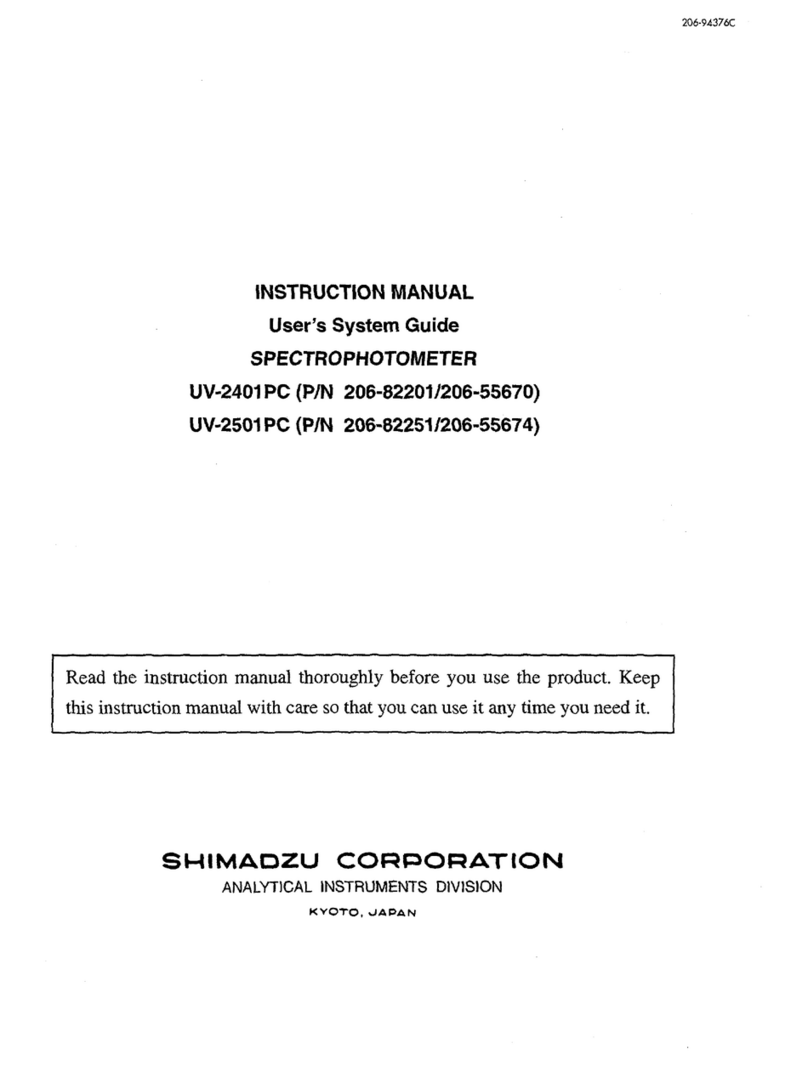
Shimadzu
Shimadzu UV-2401 PC User manual
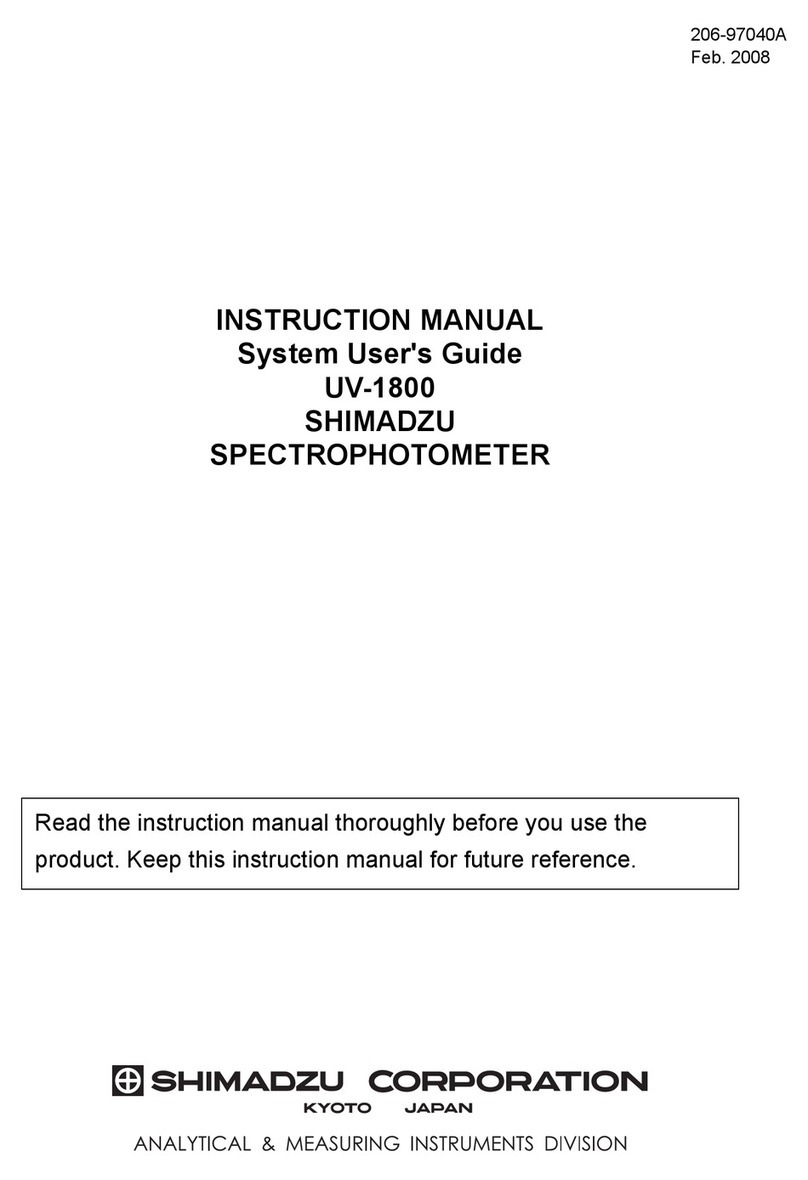
Shimadzu
Shimadzu UV-1800 User manual
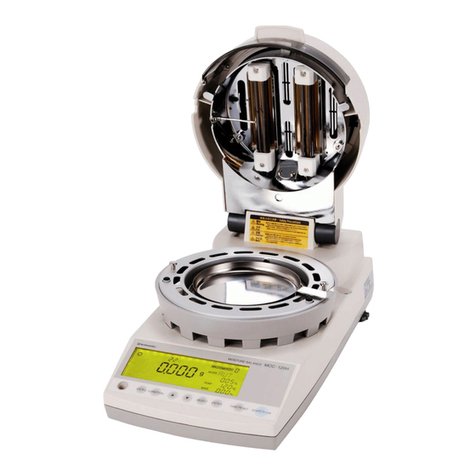
Shimadzu
Shimadzu MOC-120H User manual

Shimadzu
Shimadzu MOC-120H User manual
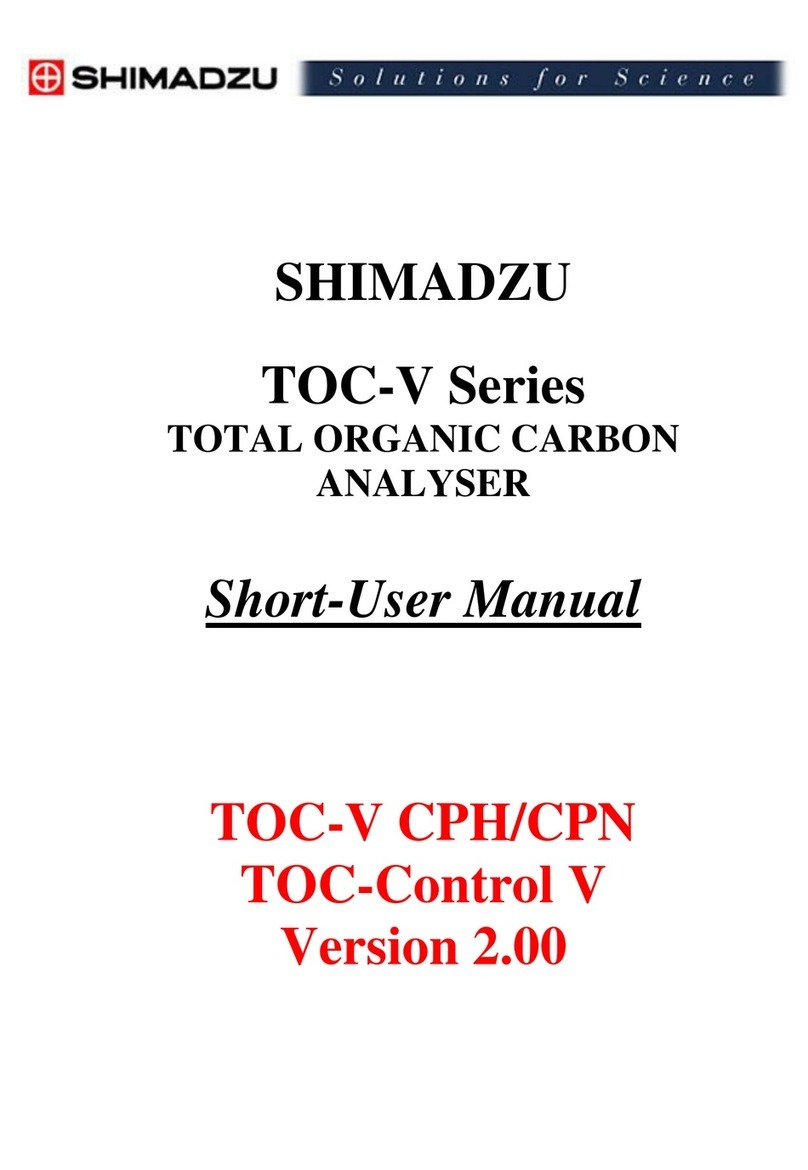
Shimadzu
Shimadzu TOC-V CPH User manual

Shimadzu
Shimadzu MOC63u User manual
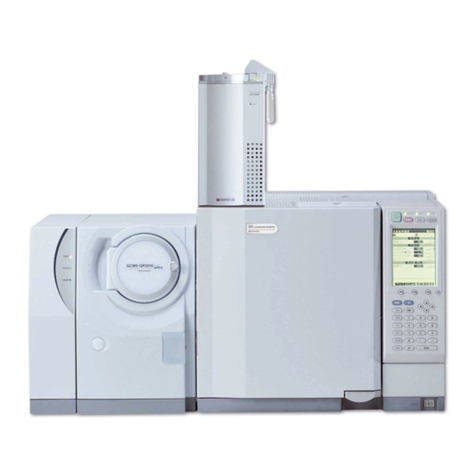
Shimadzu
Shimadzu GCMS-QP2010 Series User manual
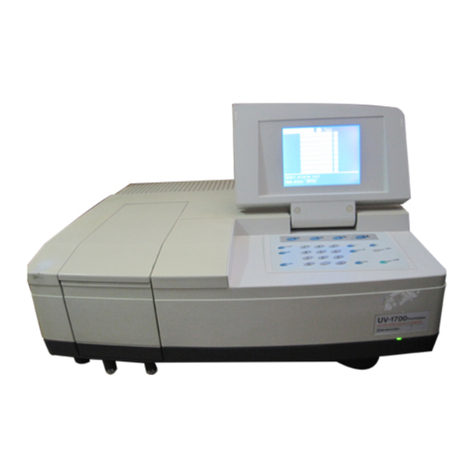
Shimadzu
Shimadzu UV-1700 series User manual
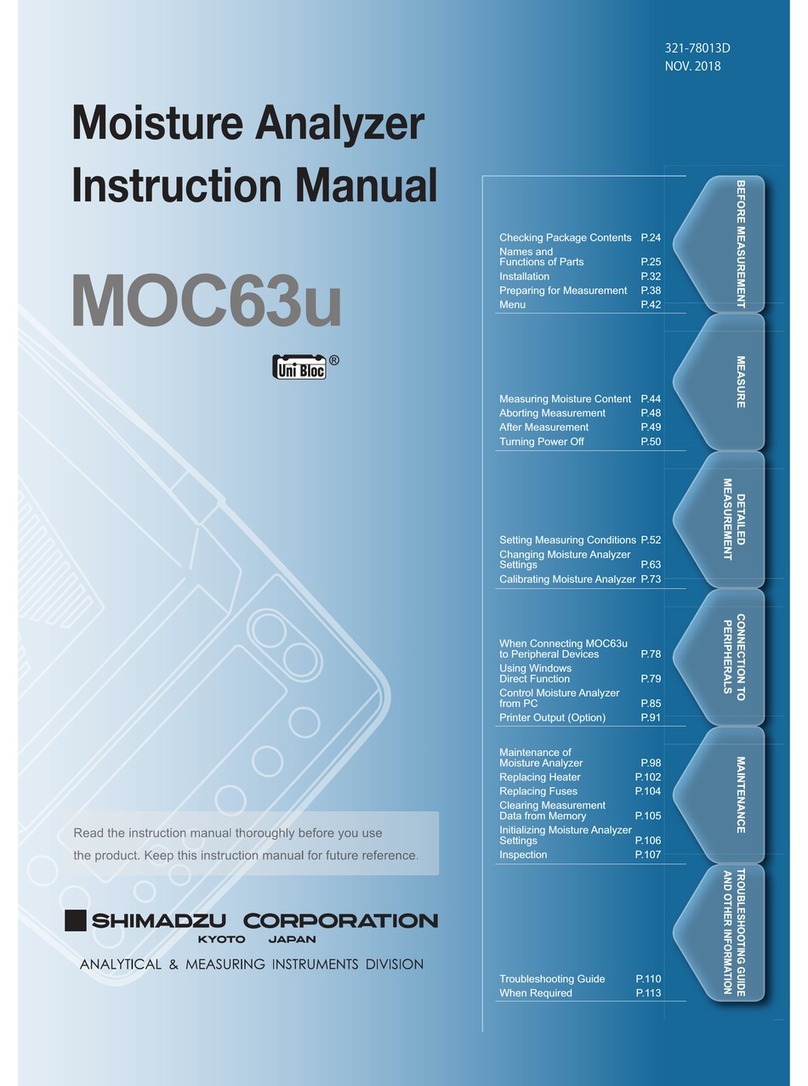
Shimadzu
Shimadzu MOC63u User manual

Shimadzu
Shimadzu AGS-X Series User manual

